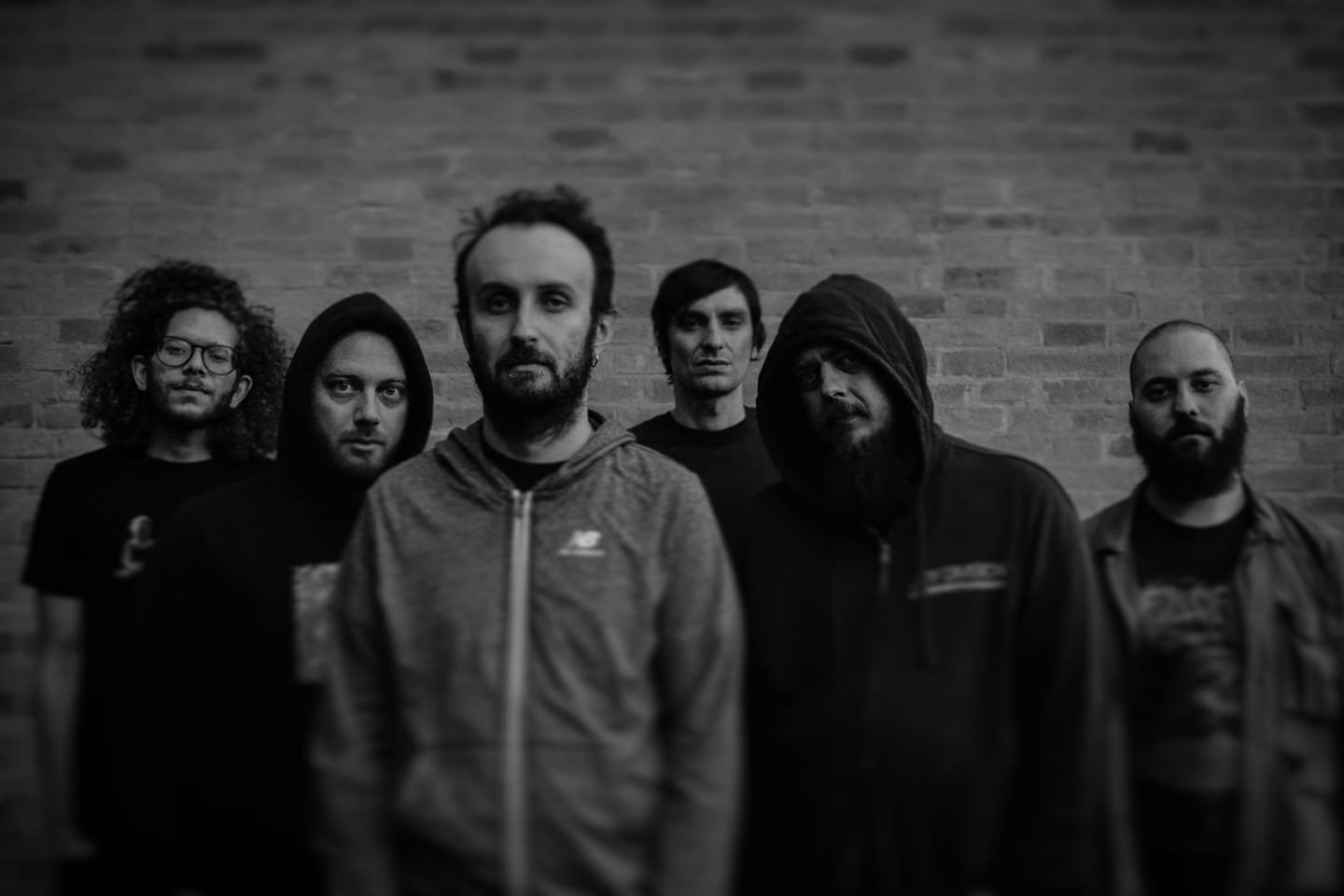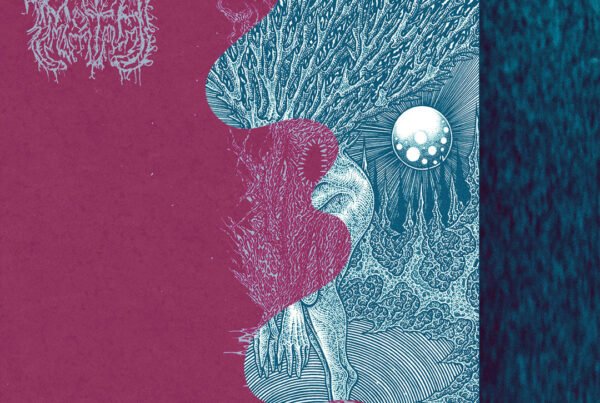Porrima, the latest effort from post-metal heavyweights Postvorta, is an introspective journey that launches thundering mountains of doom and harrowing cinematic sequences at you over one-and-a-half hours. Don’t miss this.
Release date: February 20, 2020 | Sludgelord Records | Facebook | Bandcamp
Not since Abraham‘s incredible album Look, Here Comes the Dark! have I been so taken aback by the sheer length and unyielding power of a post-metal album, so it was a real pleasure to ensconce myself within Postvorta‘s latest album Porrima. Released on February 20 via Sludgelord Records, this marks the Italian band’s fourth full-length record, with a history dating back to 2009. Postvorta have continuously adapted their sound throughout their history, beginning with heavy Neurosis influences and then evolving into a beast entirely of their own making. Porrima is a journey, not only due to the titanic length of the record, but also because of the ever-shifting soundscapes and emotions portrayed in the band’s music. After embarking on this odyssey, you’ll be left shattered, with a deep appreciation for their ability to craft such a gripping record, one that simultaneously boosts and deflates your mood.
My one pet peeve with this album is, unfortunately, its introduction. Situationally, it is far too quiet. And by situationally, I mean your listening environment and the loudness of your speakers. At home, on over-ears, you can pick out the subtle guitar twangs and effects of the ocean, but it is very hard elsewhere; on in-ears with pretty damn good noise cancelling – like I use when I walk to work – I sometimes have to check to see if anything is playing. So sometimes the first three or four minutes of the album can completely pass one by – as I said, a pet peeve. What follows, however, is truly deserving of your time.
Postvorta worked with Magnus Lindberg (Cult Of Luna) on the mixing of Porrima, with Riccardo Pasini – who has previously worked on Nero Di Marte‘s albums – producing it. The result is the guitars, drums, and effects being imbued with brilliant tones and sound design, enriching the experience even more than the band’s expert writing allowed for. The first track, “Epithelium Copia”, begins very slow over its first eight minutes, with flashes of gargantuan doom metered out through slow, winding passages. Halfway through, Postvorta dive headfirst into ambient post-rock territory, soft, warming sections with warbling, rolling guitars adding a gentle ambience. The contrast is magnificent, even more so as the band bring back the metal with a renewed vigour in the song’s tempo as they drive towards its sixteenth-minute conclusion.
With each of the five tracks stretching out from eleven to twenty-three minutes in length, it is easy to lose yourself to the experience. I always find my mind drifting away during the first seven minutes of the second track, “Vasa praevia Dipassion”, where the band utilise guitar loops to create a thick, undulating atmosphere that builds a cloud of anxiety around you. As Postvorta escalate that same anxiety dissipates into dystopian fury, the guitars roaring into huge sections that touch on death metal. The raspy growls of lead singer Nicola Dona’ lead this savage procession before the track once again succumbs to its instrumental. The next ten or so minutes that follow are exemplary of why the band’s fairly large line-up is imperative to their craft, as the atmosphere that they can create that way is overwhelming thanks to the many layers. With six members each lending their craft to Postvorta‘s music (and with all six of them mixed in brilliantly), the result is a cacophony that grips you with the newton force of an alligator’s jaws.
Given that the album’s length pushes ninety minutes, I have found it very difficult to consume it as a whole since picking it up, which is one of the downsides of the record – unless you have gallons of time on your hands. This is why I do like the middle two tracks: they are reasonably short compared to the other tracks on the record. You can dive into these two and really grasp what Postvorta are trying to accomplish. The ethereal female vocals in track three also add a really nice, hypnotising layer to the music, playing off against the savage vocals and awe-inspiring post-metal. The reverb-laced riff and the utterly crushing doom section in “March Dysthymia” help put said track on a pedestal too. It having more of an obvious song structure than the longer tracks makes it an easier listen than the others.
A layer that subtly adds weight to the album is the synths. By using industrial, dystopian sounds laced over the top or within the tracks, Porrima has so much more power. They are not overbearing, nor do they feel tacked on in any way throughout the album; they are layered in organically and with purpose. In the ambient sections is where they really shine, like in the opening of the album’s final track. They really tie the record together with their cinematic feel. I’ve only slightly dabbled in the drums as well, which somehow switch through a multitude of styles without ever sounding out of place or struggling to keep up with the band. I really like how the cymbals are utilised – Postvorta don’t fall into the trap of having so many crashes that the subtleties of the other drum hits get lost in the cacophony.
Porrima is a must-listen for fans of Cult Of Luna, The Ocean, Neurosis, and ISIS. The record marks a clear turning point for the band, as it seems the most likely to win them increased exposure within the community, thanks to its great songwriting that ties in lots of favourite tropes from the genre, melding them brilliantly within one titanic record. Whilst the length might present issues regarding its consumption, the album’s individual tracks make for some excellent listening nonetheless. It is tiring, it is exhausting, but a journey of significant value. The timing of the release couldn’t be better for the contrasting music presented within, as we leave the cold, gruelling grips of winter and march into the triumphant spring.






